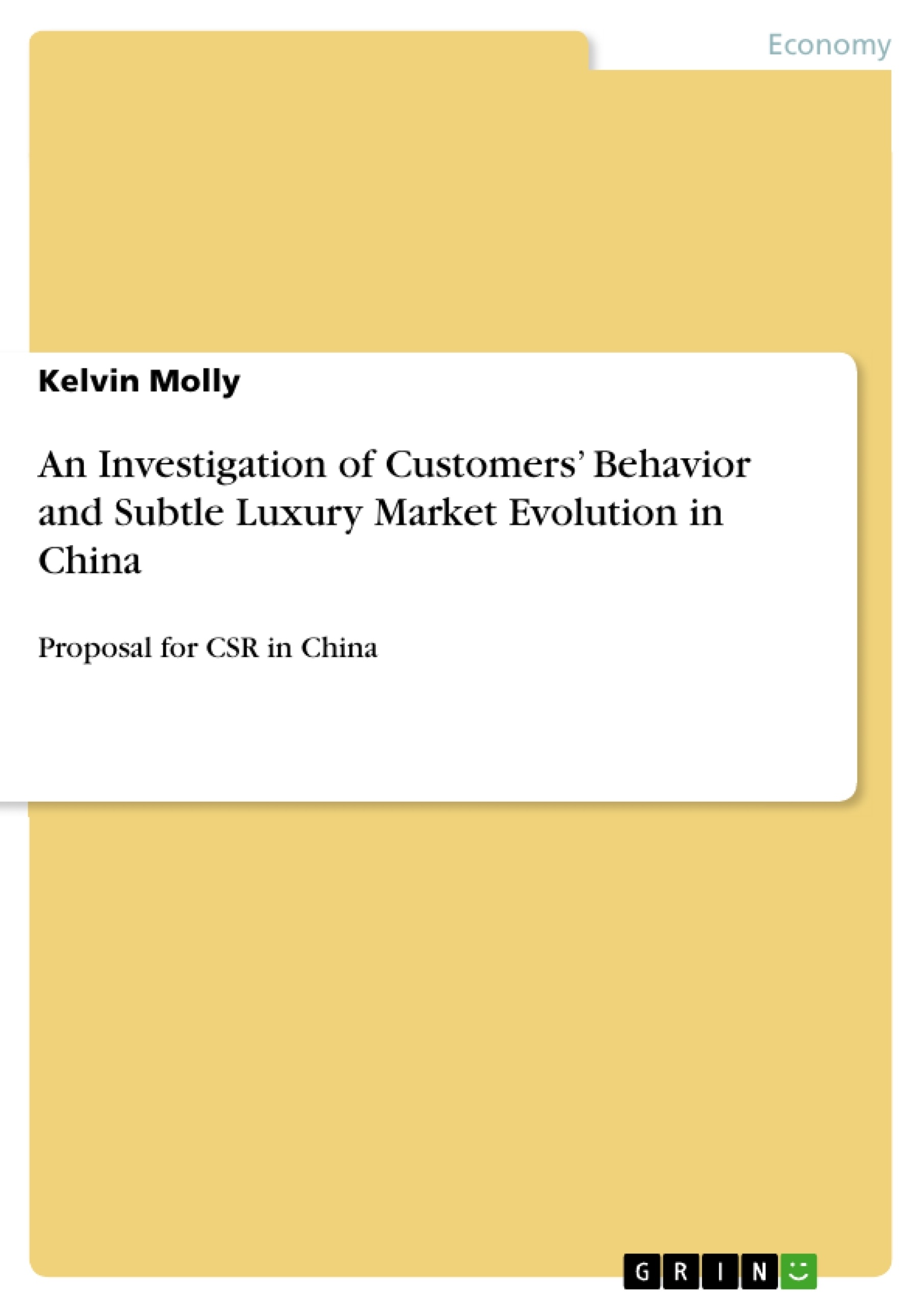Excerpt
Table of Contents
1. Introduction
2. Aim
3. Objectives
4. Methodology
5. Secondary research
6. Conclusions and recommendations
7. Bibliography
1. Introduction
The luxury brand industry in China is still growing despite the global recession. It is hard to imagine that exclusive labels were once the preserve of the European aristocracy, that a mere few decades ago these beautifully crafted pieces of clothing and accessories were perfectly for the pleasure and adornment of an oriental developing country.
Hand in hand with the economic boom in China came an explosion in upscale labels. According to a survey by McKinsey and Company, ‘the 13 million households in China’s upper middle class (incomes between 100,000 and 200,000 renminbi) offer the biggest new growth opportunity. They already account for about 12 percent of the market, and their numbers are growing rapidly, we expect to see 76 million households in this income range by 2015, accounting for 22 percent of luxury-goods purchases.’
Figure 1 Share of luxury-goods consumption in China by household income
illustration not visible in this excerpt
Source: McKinsey and Company
As we can see from figure 1, upper middle is the new booming estate, which currently account for about 12 percent of the luxury-good market, but that share is predicted to soar 32 percent in five years.
There was a report released on Forbes pointed that the researchers interviewed 1,100 upper middle class consumers of luxury products from mainland China, Hong Kong and Taiwan, 78 percent of respondents said they plan to spend the same or more on luxury goods. Furthermore, the most surprising finding is the strong correlation between a company’s social responsibility policy and the consumer’s desire to buy their products. (Stewart, 2010)
“When asked ‘Does the social responsibility of a luxury brand affect your purchasing decision of its products,’ 68 percent of respondents said it did, while only 10 percent said it didn’t. (The remaining 22 percent didn’t care.)” (Stewart, 2010)
Recently well-established fashion brands such as Louis Vuitton, Gucci and innumerable others serve the consumers of China, providing heavily investment in the market. With the surge in the number of luxury stores, serious retailers should capture the opportunities and growth strategies, otherwise they risk falling behind.
2. Aim
This report will be examining the behavior of upper middle class and subtle luxury market evolution in China with a range of finding presented. As consumers react to wider choice, faster-changing fashion, luxury brand must adjust its strategies in order to gain insights into how to be competitive in the new Chinese market.
The part begins with an interview result which indicates key strategy and business opportunity in long term. This is followed by three objectives and discussion of the particular emphasis to support the aim. It also presents the methodology and an elaborate secondary research, which included relevant CSR study and an analysis of Gucci’s inhumane working condition within China market. Recommendation is able to performance finally with consideration.
3. Objectives
Nowadays, the change in education and economic status came so quickly that the rules of consumption and the canons of taste have been fluid and loosely defined. The consumers in China now play more advisable than they have done in the past. Philanthropy and ethics are put into the spotlight, which represent a progressive phenomenon vary through time and place.
As Chadha and Husband mentioned (2006, P68), “Luxury brands are a modern set of symbols that Asians are wearing to redefine their identity and social position. This is what is commonly known as the country – of- origin effect. The consumer in China are not only spent what it takes on visible symbols these days but consider much more about individualism and brand reputation.
The last objective is to investigate the influence of brand image and Corporate Social Responsibility on Chinese shoppers. It makes a significant progress in developing sustainability strategy.
4. Methodology
The chief aim in this part is to show that a variety of consideration enter into the process of doing business research. Research data are collected mainly with the ways in which the different sources, such as books, lecture, internet and academic study report. These debates frame a series of questions about current luxury market and brand strategy, which will be evaluated in the next part.
Research strategy includes quantitative research and quantification research, each carries with it striking differences in terms of the role of theory and concerns.
[...]
- Quote paper
- Kelvin Molly (Author), 2014, An Investigation of Customers’ Behavior and Subtle Luxury Market Evolution in China, Munich, GRIN Verlag, https://www.grin.com/document/270819
Publish now - it's free






















Comments